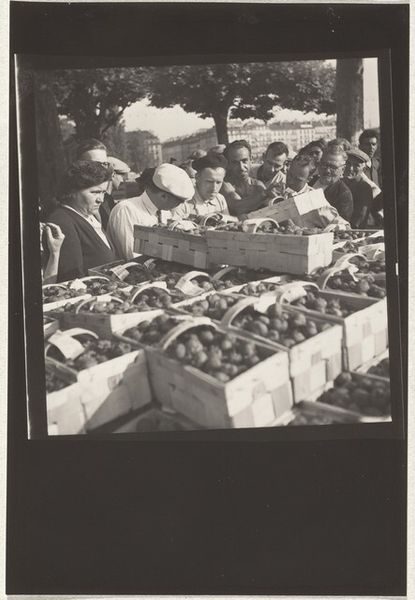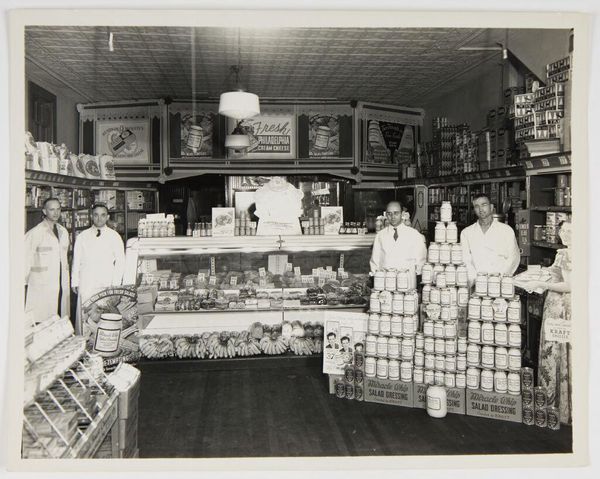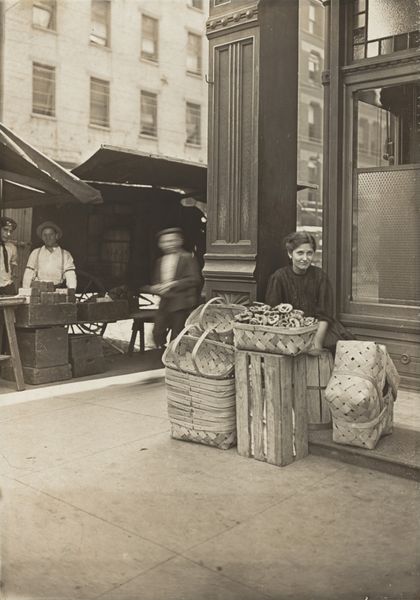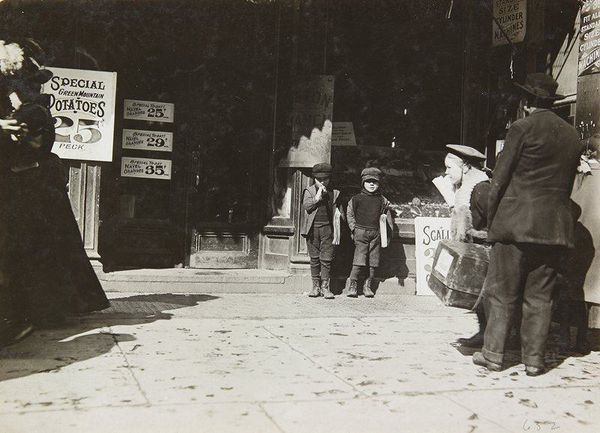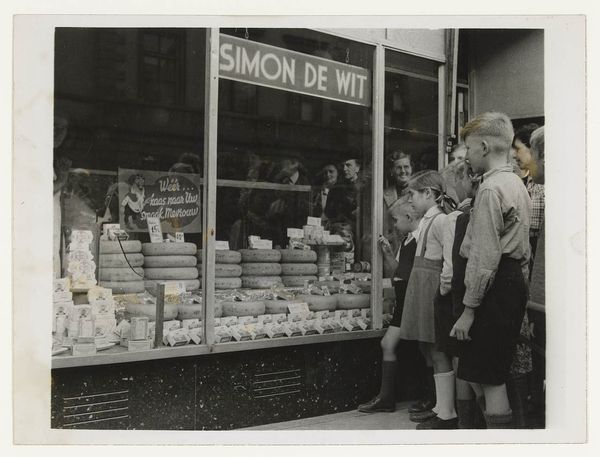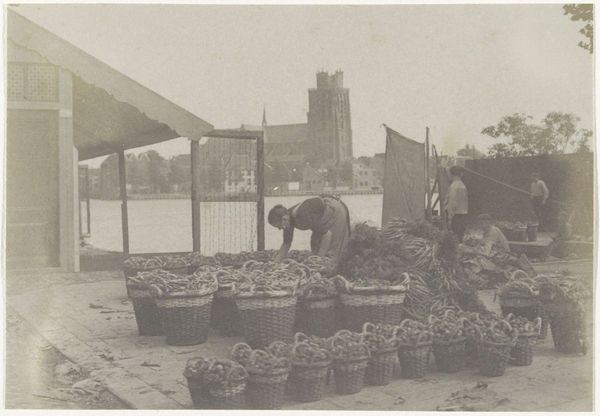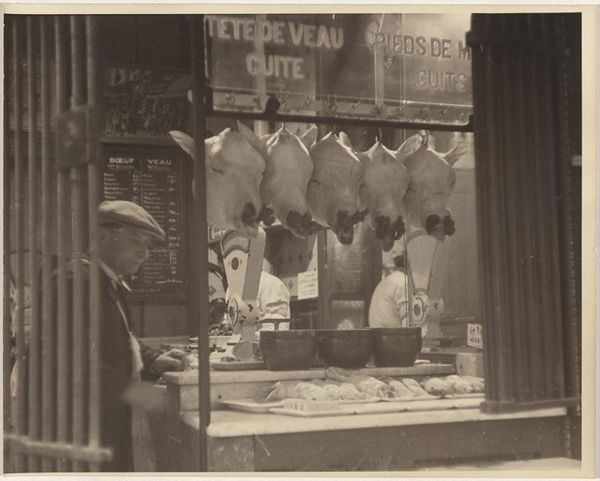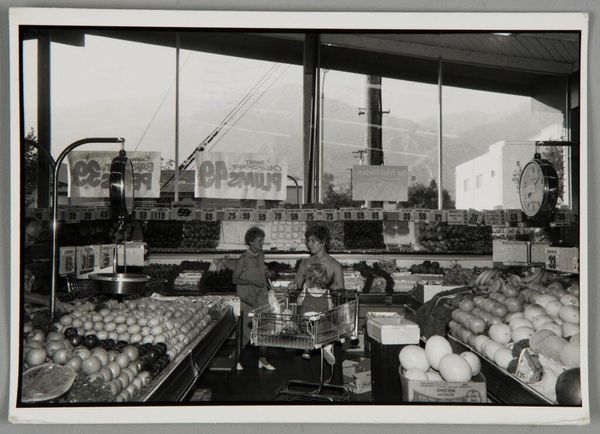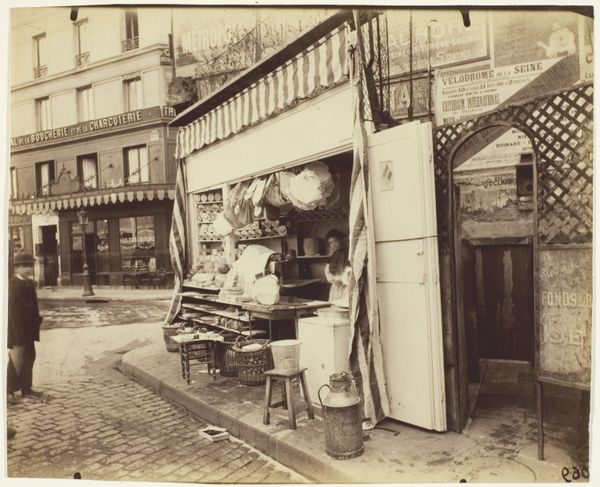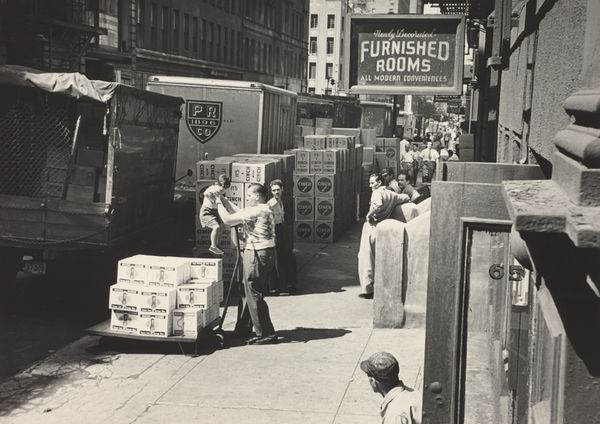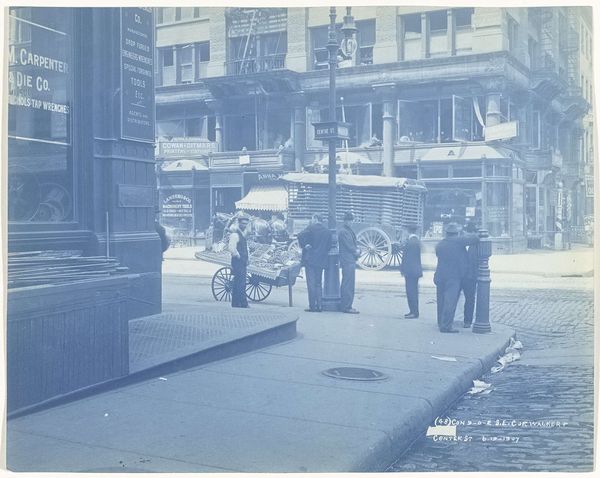
Dimensions: image: 19.5 × 24.5 cm (7 11/16 × 9 5/8 in.) sheet: 20.2 × 25.3 cm (7 15/16 × 9 15/16 in.)
Copyright: National Gallery of Art: CC0 1.0
Curator: This gelatin-silver print, "The Avenue Fish Market" by James Van Der Zee, captured in 1938, presents a street scene imbued with a palpable sense of place. Editor: Immediately, I'm struck by the tonal range of this photograph. It’s far from a straightforward monochrome; there are myriad textures and shades created from what seems like an interplay of sunlight and shadow across the figures and surfaces. Curator: Observe the rigorous structure. The shop front, with its signage and window displays, acts as a proscenium, framing the vendors and produce. The composition is bisected horizontally, differentiating the textual elements of the storefront and the textural elements of the product display in front. Editor: Right, and look closely at the materiality within the image itself: the rough-hewn planks of the display cart contrast sharply with the smooth, almost luminous quality of the fish within. Note the hand-painted signs juxtaposed with manufactured boxes advertising eggs and other goods. It points to the layers of labor present. Curator: Note, too, how the subjects adhere to this formalism, aligned neatly, enhancing the geometric qualities while still showcasing subtle personality. Each figure is subtly set at varying spatial intervals from one another which emphasizes their connection to the products. Editor: The visible signs of labor and commerce – aprons, overflowing produce displays, hand-lettered signs – all serve to illustrate the material conditions of these workers and the resources available to them during this period. What can we infer from that handwritten sale date on that small placard: 'Friday, April 8th'? This singular reference brings an entirely new historical context into the photograph. Curator: These nuanced considerations lend themselves to a dynamic tableau. What appears, on initial glance, as simply a documentary photograph reveals itself to be a detailed exploration into commerce, space, and representation. Editor: The meticulous craftsmanship in how the scene is both arranged and captured emphasizes Van Der Zee’s labor, but simultaneously documents the working-class labor he depicted so thoughtfully, doesn't it? Curator: Precisely. The photograph encapsulates a moment and allows for the appreciation of enduring artistic composition. Editor: Ultimately, its the details of production and commercial setting that makes this so remarkable to consider.
Comments
No comments
Be the first to comment and join the conversation on the ultimate creative platform.
